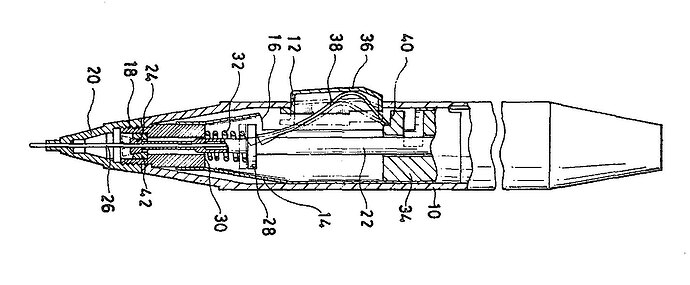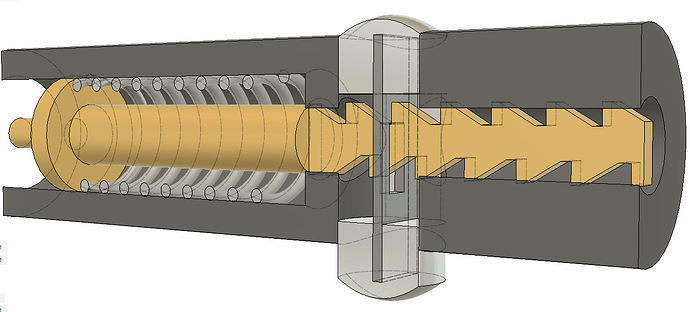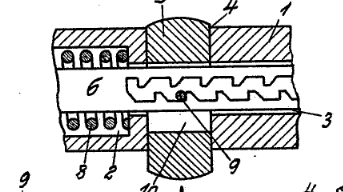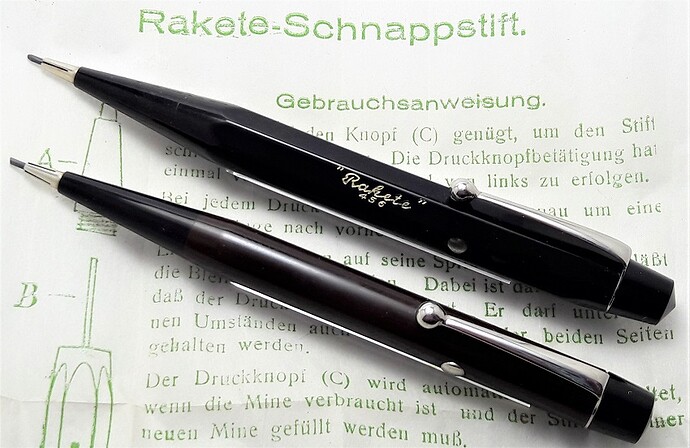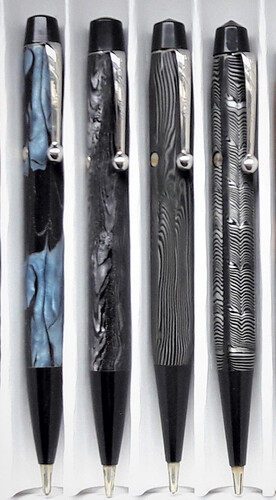A side-knock pencil is a pencil whose lead is propelled by a push on the side of its body.
I would like to expand on the following great resources from fellow Knockology members:
Patrick from Great Mechanical Pencils: Pentel Technica: The World’s First Side-Knock pencil?
Alan aka. graphography: Mechanical Pencil Month – Day 11: Side-knock pencils
As Patrick mentions in his video, Pentel possibly claimed false credit attributing the invention of side-knock pencils to itself, taking the title of first side-knock from the Mitsubishi Pecker.
Looking at an previous injustice by Pentel, as another Knockology member Drifand notes in the comments, strengthens this suspicion.
The mechanism is simple to understand (image taken from Alan’s website):
But Alan points out an earlier pencil in his blog: The Belfor Clicker from England.
He lists an even earlier 1913 patent cited by Mitsubishi for the Pecker, but since nobody has yet seen it realized, the Belfor for now remains the “first” real thing.
Its original name is KNIPS, invented in Germany in 1932 by Heinrich Jöhnßen in Nürnberg. The patent is DE598358 (english here). Note that the patent is my own research and has no official confirmation.
The name Knips is likely originating from the homonymous onomatopoeia for a button click in German.
How the KNIPS works
It’s a two-sided ratchet mechanism whose teeth are offset by half a tooth’s width. The teeth are connected to the push rod.
The teeth-push-rod-piece is acted upon with a forward force by a spring.
It is hindered from expelling the lead all on its own by a detent grabbing into the teeth:
The “button” is really one long piece carrying a plate that has a cut-out to engage with the teeth in alternating order. A detent on either side.
Now it should be apparent that pushing the protruding button inwards lifts the still engaged detent up, enabling the tooth rack to travel forward (by spring force only) until the former detent finally catches its respective tooth.
Jöhnßen improves on it in 1936 in DE632163 using a bolt which travels along the tooth rack in an inversed manner:
How do you retract the lead?
As it is with ratchet mechanisms, the geometry of the teeth blocks movement in one direction and allows it in the opposite.
A push to the tip, overcoming the spring tension, therefore, should make it retract.
Despite what the german patent and instructions say (they tell you to hold the pencil vertically), orientation should not matter (could someone verify?). In the later english patent and Belfor Clicker instructions, that specification was indeed left out.
Who manufactured the Knips?
While the Belfor was made in England, the Knips was made in Germany by Rakete and, confusingly, also distributed in the British Empire in 1934.
Rakete was founded sometime before 1925 in Beerfelden, Hessen by Kurt Meißner.
Hence, there exist Knips-identical pencil models “Rakete 123” and “Rakete 456”, both also called Rakete-Schnappstift.
More information on Meißner, Rakete and the later-acquired “Columbus” can be found here but it’s not a lot and more about fountain pens.
I hope you found it interesting.
Edits are spelling mistake corrections.
Kind regards
Mathis
